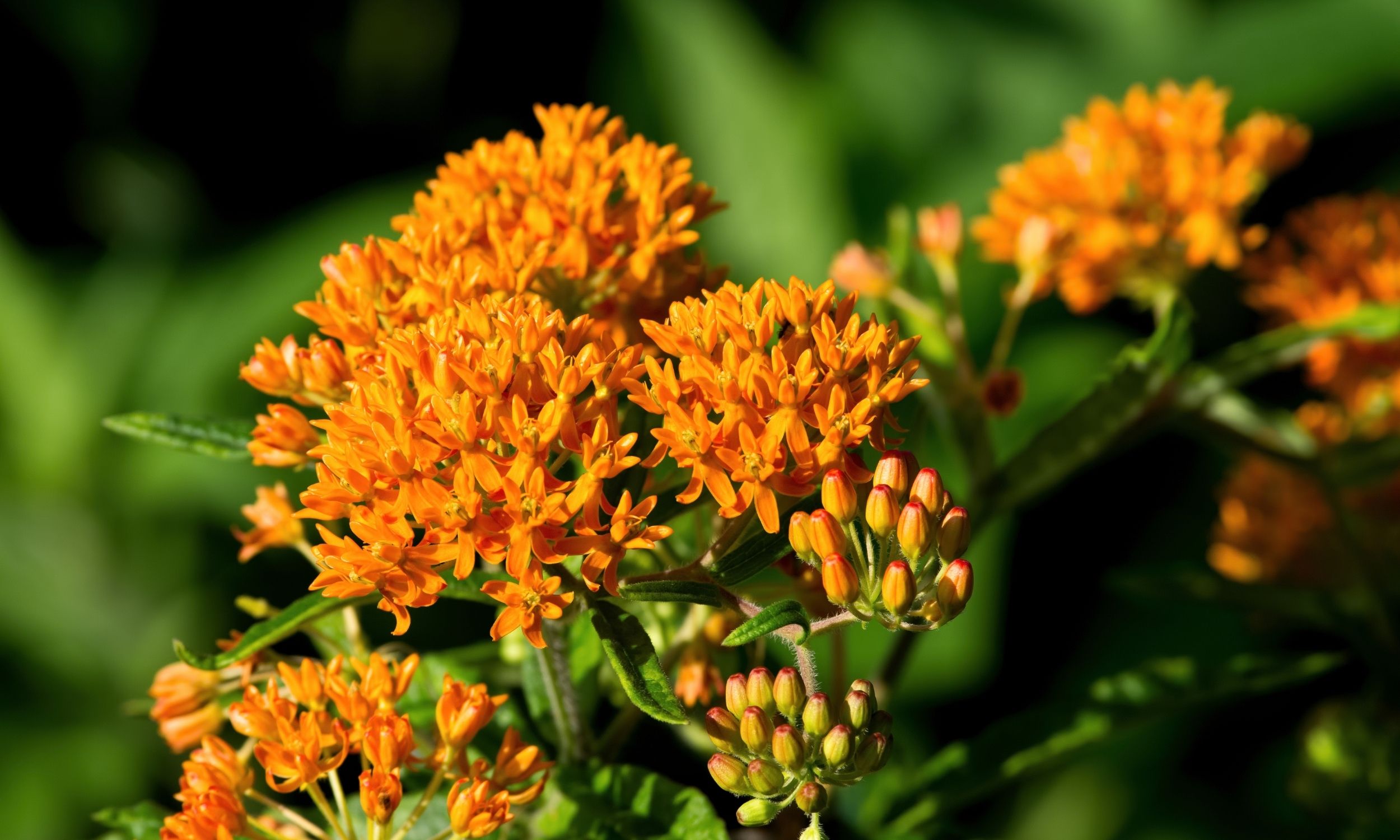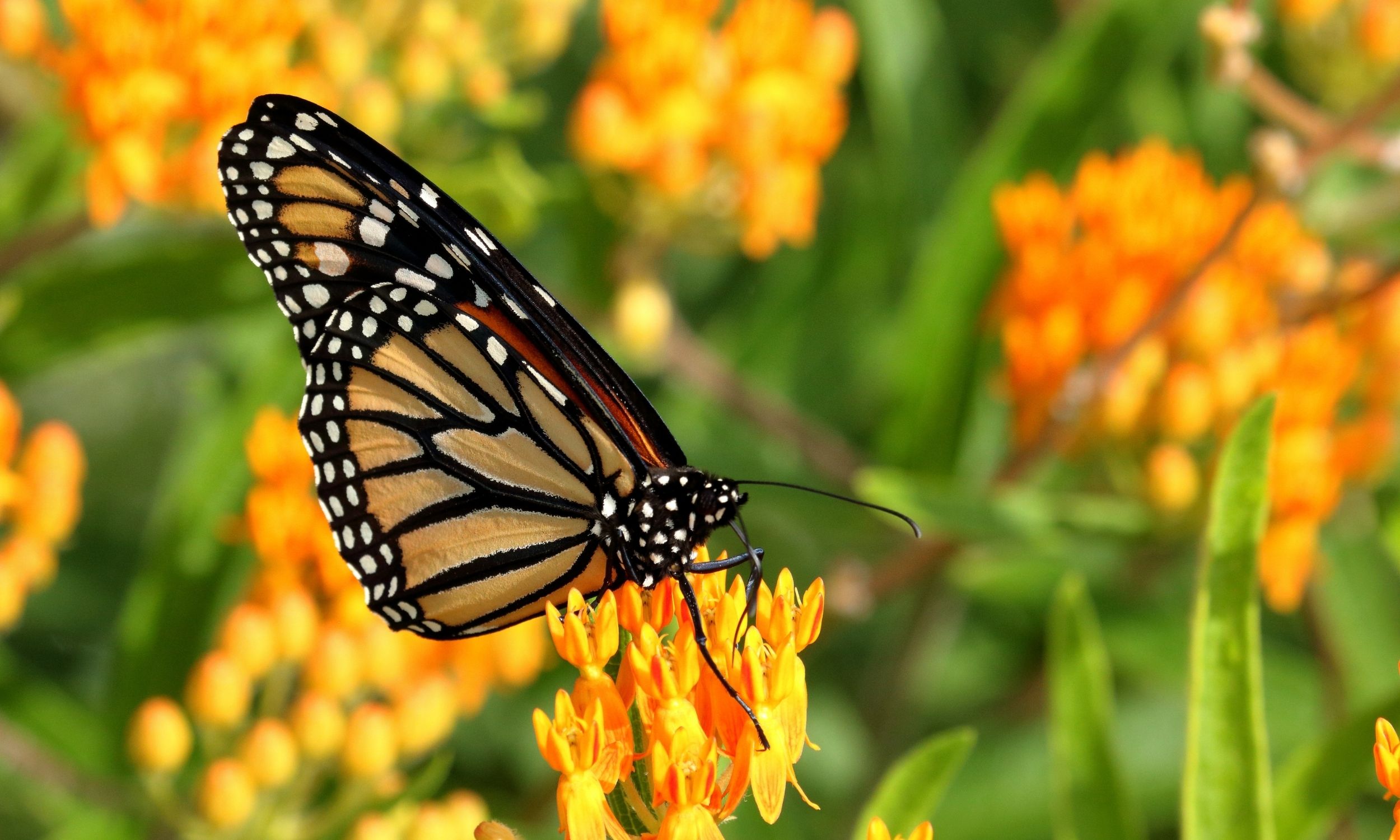Butterfly Weed vs Milkweed and Why You Need BOTH
Butterfly weed is a member of the milkweed family (Asclepiadaceae). Butterfly weed grows commonly in dry open habitats and is very common in the prairies and grasslands of the Midwest and Great Plains. It is also grown in home gardens to attach the monarch caterpillars. These beautiful native plants are found from Maine to South Dakota to the desert southwest to Florida. We grow Butterfly Weed and Milkweed on our property to attract Monarch Butterflies. So what is the difference between butterfly weed vs milkweed…
Common milkweed and butterfly weed are two species of milkweed that have much in common. Both will attract butterflies to your property, in particular, they will attract the monarch butterfly. Some differences exist in the two types of milkweed. You can grow both types of this milkweed in your garden or elsewhere on your property.
Common milkweed has a milky sap like most types of milkweeds, an aspect of the plant that gives milkweeds their name. However, butterfly weed sap is not milky. The sap is clear, which is unique among the many kinds of milkweeds. Both produce flowers in the late summer, are considered milkweed plants and butterfly plant.
Besides the sap being different colors there are a few other distinctive characteristics between butterfly weed and milkweed.
Disclosure: Some of the links below are affiliate links, meaning, at no additional cost to you, I will earn a commission if you click through and make a purchase.

What is Butterfly Weed?
Butterfly weed is a native perennial found across the eastern United States. It is well-loved by butterflies for its brightly colored flowers and abundant nectar supply. It is typically found in fields with dry soil and often grows in clumps. The stems are distinct because they are very hairy; however, unlike other milkweeds it doesn’t have a milky sap when broken. Butterfly weed will usually bloom two to three years after germination and can persist for 20 years or longer.
How is Butterfly Weed Different from Milkweed?
Common milkweed exists over much of the United States, while butterfly weed grows mainly east of the Rocky Mountains. Common milkweed has purplish flowers, with the blooms of butterfly weed orange or red, the only kind of milkweed that showcases these colors.
Common milkweed has a milky sap like most types of milkweeds, an aspect of the plant that gives milkweeds their name. However, butterfly weed sap is not milky. The sap is clear, which is unique among the many kinds of milkweeds. Common milkweed grows as high as 5 feet, while butterfly weed is shorter, with most between 1 and 3 feet tall.

Get our
Secret Guide to Butterfly Gardening
Everything you need to start and maintain a colorful and vibrant Butterfly Garden right in your backyard.
Is Butterfly Weed the Same as Milkweed?
Both butterfly weed and common milkweed produce relatively large seed pods, which contain a seed attached to a minute piece of silky “hair.” The pods break open in the fall and release the seeds, which the winds then spread throughout the countryside. The two species flower about the same time, from June into late August or early September. In the wild, both flourish in old fields, waste places and open woodlots.
Is Butterfly Weed Good for Monarchs?
Despite milkweed’s status as the only monarch butterfly host plant, there are many different species of milkweeds that monarchs can use to raise their young. While some species have been found to be preferred over others, all members of the genus Asclepias can be used as a monarch butterfly host plant.
Though butterfly weed isn’t typically the first milkweed chosen for monarch egg-laying, it’s definitely worth growing. Its bright orange flowers add will add color to your butterfly garden or pollinator garden.

How to Identify Milkweed and Butterfly Weed
There are around 100 native milkweed species in North America. If you are unsure as to which species of milkweed you have in your garden, use the following photos and key characters to determine which kind you have.
Key Characteristics of Common Milkweed, Asclepias syriaca
Flower color ranges from pink to white, highly fragrant
Milky sap when leaves/stem broken
Fine hairs on underside of leaves—soft and velvety!
Mature leaves typically quite broad
Key Characteristics of Butterfly Weed, Asclepias tuberosa
Flower color ranges from orange to yellow
Typically grow in clumps, stalks 1-3’ tall
NO milky sap is present
Very hairy stems
Key Characteristics of Swamp Milkweed (Asclepias incarnata)
Flower color ranges from pink to light purple, fragrant
Produces milky sap when leaves/stem broken
Leaves are generally smooth, long, and narrow, tapering to a point
Prefers wet ground
Key Characters of Tropical Milkweed, Asclepias curassavica
Flowers with orange corona and red corolla
Produces milky sap when leaves/stem broken
Leaves narrow and pointed
Prefers moist soils and thrives in disturbed areas (but is typically found in gardens)
Key characteristics of Showy Milkweed, Asclepias speciosa
Broad, velvety leaves similar to common milkweed (can be distinguished by the presence of white hairs)
Flower color ranges from light pink to purple
Fragrant flowers that resemble stars
In our sandy soil garden (located in zone 7) we have great success growing common milkweed, swamp milkweed, and butterfly weed. If you are looking to add Milkweed or Butterfly Weed to your garden you can buy seeds online, we suggest Select Seeds.
Growing Butterfly Weed
Butterfly weed will behave and not expand its territory, so you can utilize it closer to other plants without worrying about it overwhelming them. Plant its seeds in the fall or spring but if dividing its tuberous root and planting it, do so in the springtime. Mark where you place them, as butterfly weed is often very slow to emerge. Take into account that you want to place the plants to give you a clear view of the butterflies that come to sip the nectar of the flowers.
Buy Butterfly Weed Seeds HERE.

Growing Common Milkweed
Be patient with common milkweed as it takes two years typically before blooming once it develops. Purchase the seeds or the plants from your local nursery or cut the tuberous roots when the plant enters its dormant stage. Place the roots in the ground before the latter portion of fall so they have a chance to gain some sort of foothold before winter arrives. Put common milkweed where it may fan out and spread without becoming invasive to your other plants. A dry area is well suited for common milkweed, as long as you remember to water it.
Learn More- How to Plant Milkweed Seeds
Buy Milkweed Seed HERE.
How to Plant Milkweed Seed
Step 1: Act like Mother Nature. For the best results when growing milkweeds from seed, if you live where winters are cold, simply go outdoors anytime from late fall through mid-winter and drop milkweed seeds wherever you want them in the garden, just like Mother Nature does. When picking a spot pick one that gets full sun during the summer, native milkweed needs a lot of sunlight. Do not cover the seeds! Simply press them against the soil with your hand or the sole of your shoe. Seeds of the monarch butterfly host plant require light to germinate, so if you cover them with soil, they won’t germinate come spring.
Step 2: Walk away. Seriously. That’s it. The easiest way to grow milkweed seeds is to plant them in the fall or winter forget about them. As winter progresses, they’ll naturally be exposed to the eight to ten weeks of cold temperatures required for them to germinate when spring arrives.
Learn More- How to Plant Milkweed Seeds
Artificial Cold Stratification
You can also grow perennial milkweeds from seed by exposing them to an artificial winter. To do this, fold the seeds into a very slightly damp paper towel, and put the towel in a zipper-top baggie. Place the baggie in the back of the fridge for eight to ten weeks, then remove it and sprinkle the seeds into the garden, again being careful not to cover them with soil.
Monarch Butterfly on YouTube
You may also enjoy these related articles:
- How to Collect Milkweed Seeds
- How to Create a Monarch Waystation
- Everything Monarchs
- How to Keep Milkweed From Spreading
Did you enjoy this article? Want to hear more? Stay in touch! Sign up below to receive weekly tips and inspiration for your homestead.
[convertkit form=3733554]

